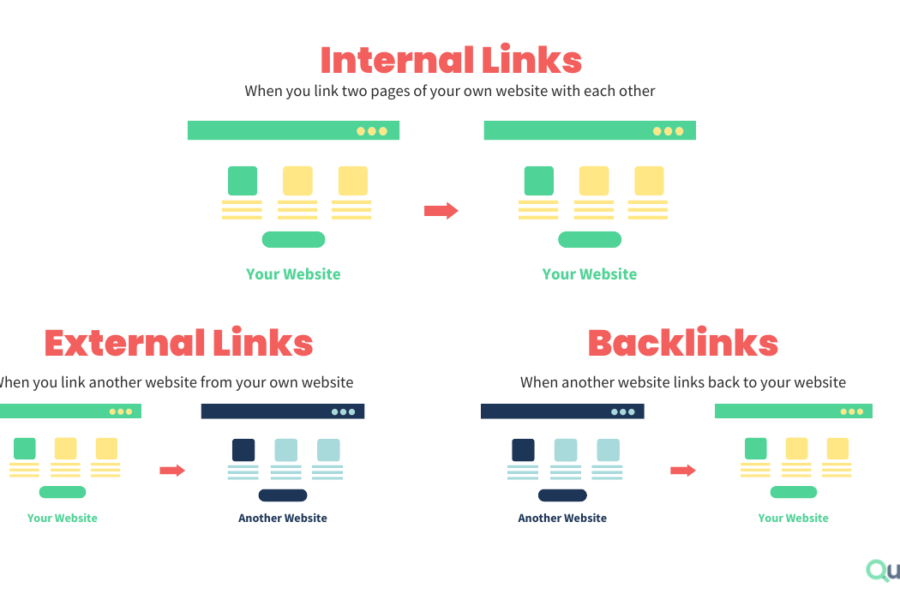How Technology is Revolutionizing the Future of Fashion
Digital fashion has emerged as a revolutionary aspect of the modern garment industry, distinguishing itself from traditional fashion through its virtual existence. Unlike conventional clothing that is physically produced and worn, digital fashion exists solely in digital form. It encompasses a wide range of creations, including virtual garments, digital avatars, and fashion that can only be experienced within virtual environments, such as video games and augmented reality applications.
The relevance of digital fashion in today’s digital world cannot be overstated. As consumers increasingly engage with technology, fashion brands are adapting by creating innovative ways to market their products. This shift has given birth to a unique subculture where traditional shopping is replaced by immersive experiences. Consumers are now able to purchase and wear digital clothing on social media platforms or in virtual worlds, thereby influencing their personal branding and social interactions.
Moreover, technological advancements play a significant role in shaping modern fashion trends. For instance, 3D modeling and design software enable creators to experiment with styles and materials that transcend the limitations of physical production. This collaboration between fashion design and technology not only allows for creative freedom but also challenges the conventional notions of sustainability in fashion. With fewer resources needed for physical production, digital fashion holds the potential to reduce waste and environmental impact significantly.
As digital fashion continues to grow, its impact on consumer behavior is becoming evident. Brands are increasingly investing in digital fashion lines to cater to the demands of tech-savvy consumers, who seek unique, customizable experiences. This merging of technology and style marks a transformative shift in the fashion industry, one that redefines the way individuals express themselves in a digital age.
The Impact of Technology on Fashion Industry
The intersection of technology and fashion has undergone a significant transformation in recent years, driven by advancements in augmented reality (AR), virtual reality (VR), and artificial intelligence (AI). These innovations are reshaping the landscape of the fashion industry, providing brands with new tools to engage customers, streamline operations, and enhance the shopping experience.
Augmented reality has emerged as a powerful medium for fashion retailers, allowing consumers to virtually try on clothing and accessories from the comfort of their homes. By integrating AR features into their mobile applications and websites, brands can create immersive experiences that allow users to visualize how products will look on them. For instance, companies like Gucci and Warby Parker have adopted AR technologies to enable customers to see how a pair of sunglasses or shoes will fit, significantly reducing the barriers to online shopping.

Similarly, virtual reality has begun to redefine the way consumers interact with fashion brands. VR offers consumers the chance to enter fully immersive environments where they can explore collections, attend virtual fashion shows, or engage in unique brand experiences. Luxury brands such as Balenciaga have utilized VR to showcase their runway shows, allowing fans and potential customers to experience the event as if they were physically present.
Meanwhile, artificial intelligence is playing a pivotal role in personalizing shopping experiences. AI algorithms analyze consumer data to recommend products based on individual preferences and shopping behavior. This level of personalization not only improves customer satisfaction but also drives sales for brands. Furthermore, AI is being leveraged for inventory management, trend forecasting, and even the design process, enabling faster adaptation to changing market demands.
The integration of these technologies signifies a shift towards a more digitized and consumer-centric fashion industry, one that embraces innovation to enhance engagement and sustain growth in a competitive marketplace.
Virtual Fashion Shows and Online Marketplaces
The evolution of fashion shows has undergone a significant transformation in recent years, particularly accelerated by global events such as the COVID-19 pandemic. With public gatherings restricted, designers and brands adapted swiftly by creating virtual fashion shows. These online presentations allowed for innovative storytelling and broader accessibility, reaching audiences far and wide without the confines of physical venues. As a result, virtual fashion shows have not only become a trend but a necessary avenue for the industry to connect with consumers and showcase collections.
In parallel to the rise of these digital spectacles, online marketplaces for digital garments have emerged, offering an entirely new realm of consumer engagement. This new retail space enables consumers to purchase and wear digital clothing within virtual environments, such as social media platforms and gaming worlds. This innovative approach allows users to express their style without the constraints of physical materials, providing an avenue for creativity and individuality in their online personas. Users can engage in the excitement of fashion while seamlessly integrating it into their digital lives.
Marketplaces specializing in digital fashion now thrive, catering to a growing demographic eager for unique and bold fashion choices. These platforms not only support established designers but also provide a launching pad for up-and-coming creatives. The fusion of fashion and technology promotes an inclusive atmosphere that encourages experimentation and interaction, further fueling interest in virtual fashion. As consumers increasingly embrace their digital identities, the demand for eye-catching digital garments continues to grow.
In conclusion, the shift towards virtual fashion shows and online marketplaces signifies a new frontier for the industry. Through technology, fashion has found a way to remain resilient and adaptable, allowing it to flourish in the face of challenges. As the landscape of style evolves, it is clear that the future of fashion will be intrinsically linked to its digital counterparts.
The Role of Social Media in Digital Fashion
In recent years, social media has emerged as a powerful catalyst in the realm of digital fashion. Platforms such as Instagram and TikTok have revolutionized how designers and brands showcase their digital collections, allowing them to reach a global audience like never before. These visual-centric platforms not only provide a stage for established names in the fashion industry, but they also enable emerging designers to gain visibility and recognition, thereby leveling the playing field.
Instagram, with its highly visual interface, serves as a primary hub for digital fashion promotion. Designers share compelling images and videos of their virtual garments, leveraging creative storytelling to engage their followers. Additionally, influencers play a pivotal role in this ecosystem by collaborating with brands to feature digital fashion pieces in their content. Through carefully curated posts and engaging stories, influencers bridge the gap between technology and consumer, captivating their audience with the allure of virtual fashion that can be seamlessly integrated into their online personas.
Moreover, TikTok has introduced a dynamic twist to the landscape of digital fashion promotion. The platform’s short-form video format encourages creativity and spontaneity, allowing users to experiment with digital outfits and styles in fun and engaging ways. As trends bloom in this fast-paced environment, user-generated content becomes a significant driver of popularity within the digital fashion sphere. Challenges, dance routines, or styling hacks featuring virtual clothing not only spark interest but also foster a community of digital fashion enthusiasts who share their unique interpretations of trending aesthetics.
Ultimately, social media serves as an indispensable tool for promoting digital fashion, illustrating how technology continues to redefine the interactions between designers, consumers, and platforms. The influence of these social platforms will likely persist as digital fashion continues to evolve, shaping our understanding and appreciation of style in the digital age.
Sustainability in Digital Fashion
As the fashion industry grapples with its environmental impact, digital fashion emerges as a beacon of sustainability. Traditional clothing production processes, which often entail extensive resource consumption and waste generation, stand in stark contrast to the advantages offered by digital alternatives. The creation of virtual garments significantly reduces the need for physical materials, leading to less waste and a smaller carbon footprint. By eliminating the need for physical fabric, dyes, and labor-intensive processes, digital fashion minimizes environmental degradation.
Moreover, digital clothing provides a viable solution to the fast fashion dilemma. Fast fashion is characterized by the rapid production of inexpensive clothing, creating an unsustainable cycle of consumption and disposal. In contrast, digital fashion allows consumers to explore and express their individual styles without contributing to the overproduction of clothing. Virtual garments can be worn in digital spaces, such as social media or virtual reality environments, offering a sustainable alternative to purchasing multiple physically produced outfits. This shift encourages a more mindful approach to fashion consumption.
The impact of digital fashion extends beyond individual choices. Brands embracing digital designs can streamline their production processes, focusing on quality and innovation rather than rapid turnover. This transition not only fosters sustainability but also encourages ethical practices within the industry. By prioritizing digital solutions, brands can align with consumer preferences that increasingly favor ethical and environmentally conscious choices.
In conclusion, digital fashion represents a significant advancement toward sustainability in the fashion industry. Its ability to minimize waste and provide alternatives to traditional fast fashion consumption patterns positions it as a crucial player in promoting ethical fashion practices. Embracing digital fashion is not merely a trend; it is a step toward a more sustainable future for the industry.
Customization and Personalization in Digital Clothing
The emergence of digital fashion has ushered in an unprecedented era of customization and personalization, empowering consumers with the ability to create clothing that reflects their unique style. Technological advancements, particularly in 3D modeling software and user-friendly applications, have transformed the fashion landscape, allowing individuals to take an active role in the design process. These tools enable users to experiment with different fabrics, colors, and patterns, facilitating a creative outlet that was previously reserved for professional designers.
One of the significant innovations in this domain is the integration of 3D modeling software, which provides consumers with a digital platform where they can visualize their clothing designs in real-time. Users can manipulate various elements such as silk textures, denim styles, or patterned fabrics, enabling a high degree of customization that ensures each design is one-of-a-kind. This technology not only enhances user experience but also fosters a sense of ownership over the final product. Consumers are no longer passive participants but active co-creators in the fashion process.
Moreover, several user-friendly applications have emerged, allowing individuals without any background in fashion design to create personalized clothing easily. These applications often feature drag-and-drop functionalities, pre-made templates, and guided prompts, making the design process accessible even to novices. As a result, individuals can express their personal tastes without the intimidation often associated with traditional design methods. This democratization of fashion design not only caters to diverse aesthetics but also reinforces individuality in a globalized fashion market.
In essence, customization and personalization in digital clothing signify a transformative shift in the consumer experience, where technology and creativity converge. This evolution is redefining ownership and individuality in fashion, making style more personal than ever.
Challenges and Drawbacks of Digital Fashion
The emergence of digital fashion, while revolutionary, poses several challenges and drawbacks that warrant careful consideration. One significant concern is the digital divide, which refers to the disparity in access to technology. As digital fashion gains traction, individuals without access to advanced devices or high-speed internet may be excluded from this evolving trend. This divide could exacerbate existing inequalities in the fashion industry and society as a whole, reinforcing barriers that prevent full participation in both digital and physical fashion environments.
Another challenge relates to the permanence of digital goods. Unlike traditional fashion items, which can be physically altered or repurposed, digital garments exist in a static format once created. This permanence may limit individuals’ ability to customize their digital wardrobes, thus restricting expression and creativity. Furthermore, as digital fashion becomes part of one’s online identity, there is a risk that an individual might feel tied to certain representations, with little room for evolution or change, potentially stifling personal growth and exploration.
Copyright and ownership issues also arise in the realm of digital fashion. The digital nature of these garments blurs the lines of intellectual property, raising concerns regarding the protection of designers’ original works. As digital goods can be easily replicated and distributed online, unauthorized use may become prevalent, undermining the creators’ ability to profit from their designs. The fashion industry must navigate these complexities, seeking solutions that balance innovation with the enforcement of copyright laws.
In summary, the challenges posed by digital fashion, including the digital divide, the permanence of digital goods, and copyright concerns, highlight the need for a thoughtful approach to integrating this trend into our predominantly physical world. Addressing these challenges will be critical for shaping a sustainable digital fashion landscape that promotes equity and respects intellectual property.
The Future of Digital Fashion
The evolution of digital fashion is poised on the brink of substantial transformation, greatly influenced by advancements in technology. The future holds promising trends that will shape this emerging domain, most notably through the implementation of blockchain technology. This decentralized ledger system offers a method for ensuring authenticity and provenance in digital garments, which is particularly essential as the industry faces increasing concerns over counterfeit goods. By leveraging blockchain, brands can provide transparent information regarding the creation, ownership, and transaction history of their digital assets, thereby establishing trust with consumers.
Moreover, the integration of non-fungible tokens (NFTs) into the fashion sector is expected to gain momentum. NFTs provide a unique way for designers and brands to monetize digital garments, allowing users to purchase exclusive items that can be worn in virtual environments or utilized in social media platforms. This shift not only opens new revenue streams but also enhances community engagement as consumers seek unique representations of their personal style in the digital space. The ownership of such digital assets emphasizes the move towards individual expression through virtual wardrobes, allowing users to curate their online identities in multifaceted ways.
Additionally, further immersive experiences are likely to arise, blurring the lines between physical and digital wardrobes. Emerging virtual reality (VR) and augmented reality (AR) technologies can create interactive and personalized shopping experiences. Consumers could try on digital clothing in simulated environments before making a purchase, increasing the likelihood of satisfaction and reducing returns. The fusion of AR and VR with digital fashion not only provides a fresh approach to shopping but also encourages innovative design practices, where garments can be tailored and adjusted to meet the preferences of each user.
Conclusion: Embracing the Digital Fashion Revolution
As explored throughout this blog post, digital fashion is no longer a fleeting trend but a pivotal evolution in the style landscape. The integration of technology with clothing design and consumer experience has transformed the way we perceive and engage with fashion. With the rise of virtual reality, augmented reality, and advanced digital design software, the boundaries that once defined traditional fashion are continuously being redefined. Designers can now create immersive experiences, allowing consumers to visualize and interact with fashion trends in ways that were previously unimaginable.
Furthermore, the practicality of digital fashion cannot be overlooked. From sustainability benefits—reducing waste by eliminating physical samples and excess inventory—to creating bespoke virtual avatars, the potential for customization is immense. These advances not only provide consumers with unique fashion options but also align with a growing demand for eco-friendly practices in the industry. Consequently, the importance of staying abreast of these digital advancements is paramount for both fashion enthusiasts and professionals alike.
As we navigate this rapidly evolving digital fashion landscape, it is crucial for individuals to reflect on how these trends can impact their personal style choices. Each new advancement opens doors to creativity, self-expression, and an enhanced shopping experience that blurs the lines between the physical and digital realms. Embracing digital fashion not only signifies an adaptation to current trends but also represents a step toward a more innovative and inclusive fashion industry.
In summary, understanding and embracing the digital fashion revolution is essential for anyone passionate about fashion. As technology continues to shape our world, being informed and adaptable will ensure that we remain at the forefront of this exciting evolution, allowing our style to reflect both personal identity and the dynamic nature of contemporary fashion.




Hi i think that i saw you visited my web site thus i came to Return the favore I am attempting to find things to improve my web siteI suppose its ok to use some of your ideas